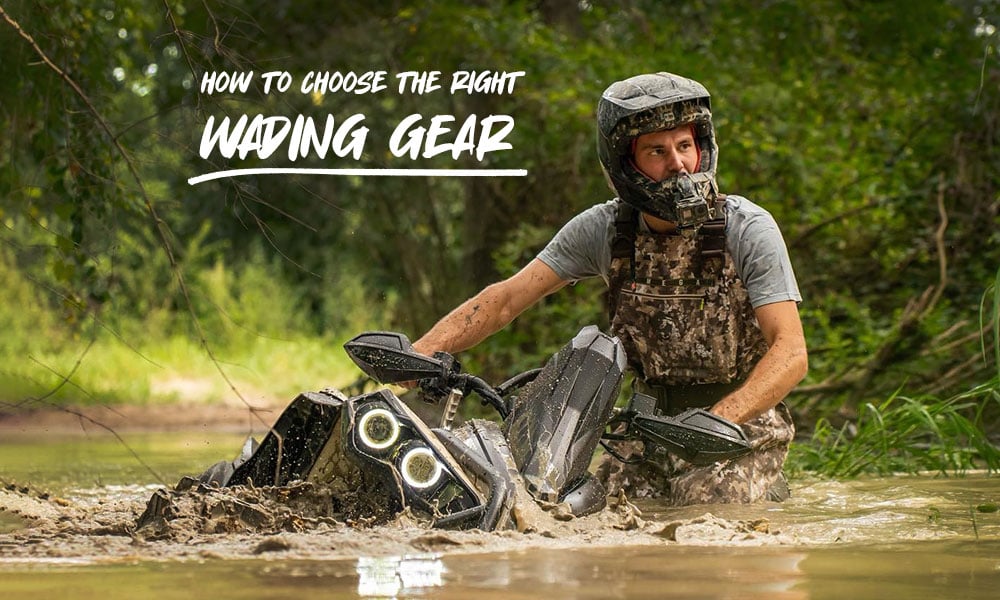Last Updated on
By David Link
Selecting the right fishing line can be key to hauling in the big one, but not all fishing line types are suitable for the same fishing situations. We break down the popular types of line as well as touch on how fishing line was first developed.
A Brief History Of Fishing Line
Fishing as a means of survival began ages ago in the Paleolithic period when stone tools (including crude fishing hooks made from bone) first appeared. Fishing as a recreational sport, as opposed to a primary source of food, was first formally embraced by the English, although it is likely that it developed similarly elsewhere. However, the English were the first to write about the sport all the way back in 1496. The earliest fishing lines were constructed out of natural materials like cotton or linen or other animal materials and braided together meticulously by hand. Although cotton, linen or horse hair were the most common materials, those who could afford it fished with the much more expensive silk material.
Braided fishing line became the standard in common fishing lines, and since it was composed of several fibers wound together, it was stronger than a single line and therefore less likely to snap. The Industrial Revolution further changed fishing line, and although braided line was still the standard, it was now constructed on assembly lines where quality and consistency could be better monitored. It was also manufactured far faster than the old hand braided methods, and as a result recreational fishing became more accessible to everyone.
Fishing line changed again in the early 1900s as the DuPont company began to create synthetic polymers like nylon. Lines no longer needed to be braided because of the superior strength of these synthetic materials, and many fishing lines soon became monofilament or lines made of a single strand of line. However, braided line never went extinct, and it lives on today in some specialty fishing uses.
Types Of Fishing Line
Monofilament
Monofilament line has been the primary successor to classic braided line, and it has many desirable properties that braided does not. First, monofilament is very light since it only consists of a single strand of line, and this results in added buoyancy that keeps the line from sinking very fast. This added buoyancy allows anglers to fish for species that prefer shallow depths more effectively. The knot strength of monofilament is superb, and knots are easy to tie and stay tight even after strenuous use. Monofilament line is also very elastic and can stretch under heavy loads without breaking.
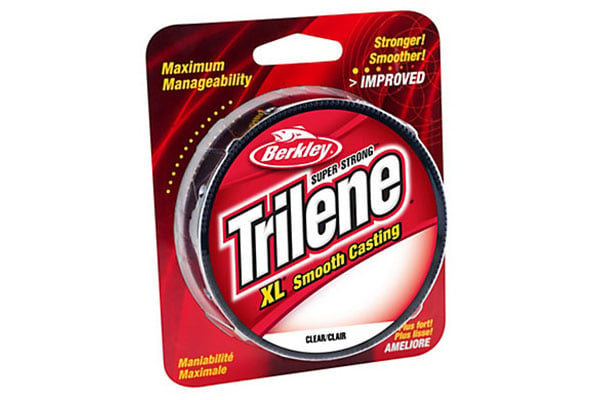
The elasticity of monofilament is its greatest strength but also its greatest weakness. Because the line stretches when placed under stress, the hook is set into the fish with less force than a line that doesn’t stretch would provide. It can also be hard to feel light bites from smaller fish when using monofilament. Although this type of line is generally inexpensive, opt for mid to high range brands to ensure proper performance. You will also get the best results if you replace monofilament line yearly.
Fluorocarbon
Fluorocarbon is a newer material than that of monofilament lines, and it provides advantages that monofilament lines cannot. First off, fluorocarbon is a heavier line and therefore it sinks faster than monofilament lines. This can be an advantage in some fishing situations just as a buoyant line can be an advantage in others. When casting for fish that prefer deeper waters, a fluorocarbon line can increase your chances of success, and you don’t have to worry as much about a “sinker” or weight added to the line, dragging your lure / hook to the very bottom and gathering muck and debris.
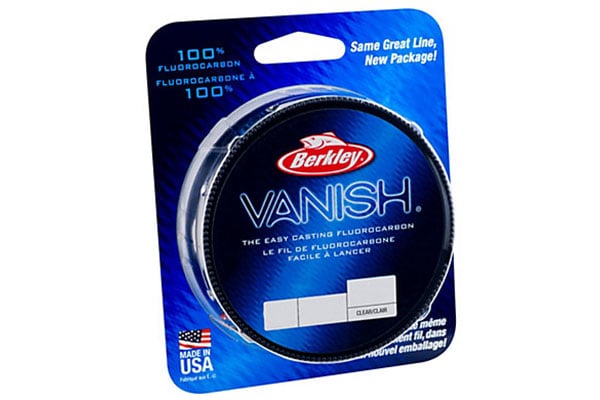
The second advantage of fluorocarbon is that it is very transparent and therefore less likely to be spotted by observant fish. It is also stronger and can set the hook better than monofilament. Drawbacks to fluorocarbon include an overall weaker knot strength than monofilament and a higher price point. Since fluorocarbon is a heavier line, it’s not ideal for ultra-light rod and reel combos either.
Braided
As we mentioned above, braided is the oldest form of fishing line, and the fact that it consists of several lines wound together gives it superior strength when compared to single strand lines. With the advent of sythentic materials, braided lines are now being created where several strands of monofilament or fluorocarbon lines that are either finely wound together or fused so they won’t separate. This creates a very strong line, commonly termed a “superline,” that has very little elasticity or stretch and allows the hook to be set with a great amount of force. The modern braiding or fusing techniques create a very small line in terms of diameter so you can load a lot on a reel, but the drawback is that this line is very visible in the water. You’ll need to take special care with braided line knots as they can slip similar to fluorocarbon. Braided line is key to success in saltwater fishing, but many fisherman use them in freshwater situations as well.

Fly Fishing Varieties
Fly fishing specific line does not use different materials than the three above varieties, but there is a distinct difference with this type of line. Fly fishing usually takes place in rocky streams where a line that sank would become damaged or severed, and more importantly flies are designed to sit on top of the water, so to support this strategy the line must float as well. As a result fly lines are coated with a plastic envelope that extends almost the entire length of line except for the front of the line that is tied to the lure (commonly known as the leader). This coating is waterproof and many times air bubbles or floaters are inserted between the outer coating and the core to encourage the line to float. The line inside the plastic envelope is either monofilament or braided monofilament line. Fluorocarbon line is not an ideal material for the majority of fly fishing line, but the leader can be made of fluorocarbon because of its transparency.
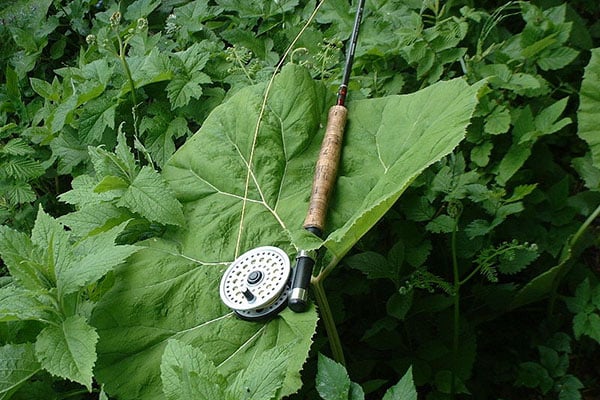
Nanofil
There is one more type of specialty line that is a newcomer to the fishing line market. This line is called Nanofil, and although it displays strength similar to braided line, it is only composed of one single line similar to monofilament. The secret is in the structure of this material which in it’s raw form starts out fluffy and full of pores. Once it is heated it is fused into a single, very strong line that is also very small in diameter. You can put an extreme amount of this stuff on a reel since it isn’t very thick, but you will have to take care when tying knots because it is so thin.
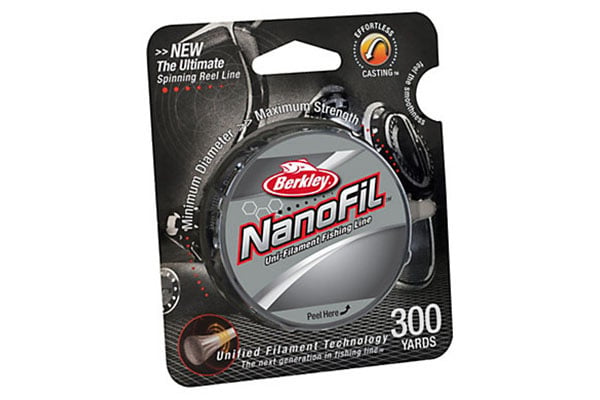
Image four courtesy of Wikimedia Commons.







